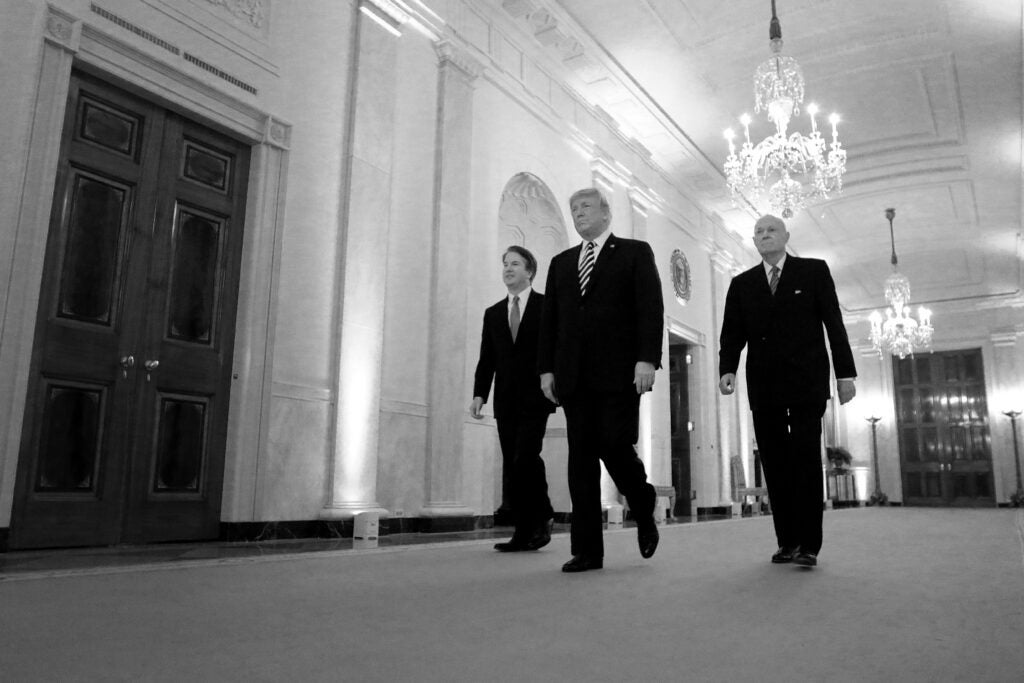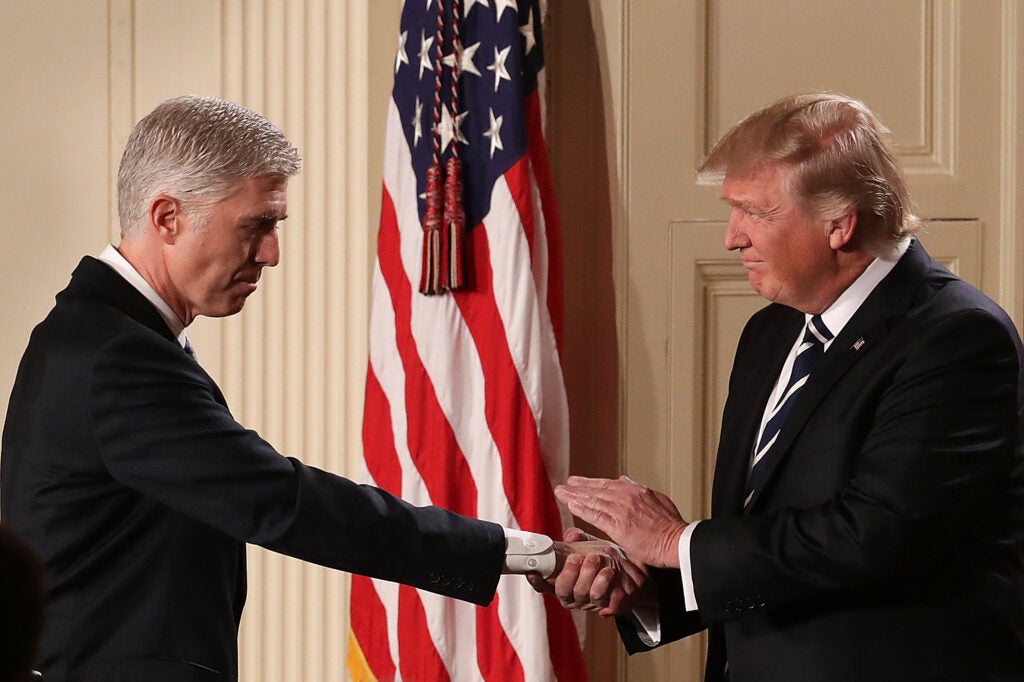Safety of Supreme Court Justices Under Scrutiny After Trump Assassination Attempt
Mary Margaret Olohan /
House Republicans are raising concerns about the potential for more political violence against Supreme Court justices following the attempted assassination of former President Donald Trump.
House Judiciary Committee Chairman Jim Jordan, R-Ohio, and Rep. Darrell Issa, R-Calif., pointed to the “recent incendiary rhetoric directed towards other federal officials, including in particular the men and women serving on our nation’s highest court” in a letter sent to Attorney General Merrick Garland on Tuesday.
Far-left activist groups and lawmakers have repeatedly threatened to restructure the court if the justices do not rule the way that these groups desire. And Justice Samuel Alito himself has said that the May 2022 leak of the draft opinion indicating Roe v. Wade would soon thereafter be overturned made the conservative justices “targets for assassination.”
“In light of the heightened rhetoric and the recent assassination attempt on President Trump, we remain concerned about the security and safety of all judicial branch officers—including and especially the safety of Supreme Court justices,” the Republicans wrote.
“As such, we request a staff-level briefing regarding the Department’s efforts and the steps taken to ensure and bolster the safety of Supreme Court justices,” they continued. “Please arrange for this briefing to occur as soon as possible, but no later than August 6, 2024.”
Neither the Supreme Court nor the Justice Department immediately responded to requests for comment for this report.

The move follows the attempted assassination of Trump, in which a gunman fired multiple shots at the former president during a July 13 campaign rally in Butler, Pennsylvania, about 33 miles north of Pittsburgh. A former fire chief, Corey Comperatore, 50, died shielding his family from the gunfire, and two other rally attendees were injured.
The Republicans contend that there is a preponderance of politically charged rhetoric that could spur more such attacks, and specifically point to threatening words from Sen. Chuck Schumer, D-N.Y., in March 2020: “I want to tell you Gorsuch. I want to tell you Kavanaugh. You have released the whirlwind and you will pay the price.” Neil Gorsuch and Brett Kavanaugh are two justices on the high court.
At the time, Schumer was speaking at a rally in front of the U.S. Supreme Court, where justices heard arguments in June Medical Services v. Russo, involving an abortion provider challenging Louisiana’s 2014 state law requiring abortionists to have admitting privileges in hospitals within 30 miles of their facilities.
“You won’t know what hit you if you go forward with these awful decisions,” he told the justices.
About a month after the May 2022 Supreme Court leak to Politico, Kavanaugh’s family discovered that in the middle of the night, authorities had arrested a man just steps from their home—26-year-old Nicholas John Roske, who had traveled from California to Maryland with the express intent of killing Kavanaugh and two other justices.
Roske told authorities that his assassination ambitions were spurred after he saw the justices’ home addresses posted online. Shortly after the leak, the radical pro-abortion group Ruth Sent Us posted the justices’ addresses and began urging protesters to go to the homes of the “six extremist justices” who likely voted for the opinion overturning Roe v. Wade—Chief Justice John Roberts and Justices Amy Coney Barrett, Samuel Alito, and Clarence Thomas, along with Gorsuch and Kavanaugh.
Far-left protesters from Our Rights DC and Rise Up 4 Abortion Rights joined these groups in targeting the justices’ homes, even though 18 U.S. Code Section 1507 forbids picketing or parading “in or near a building or residence occupied or used by such judge, juror, witness, or court officer” with the intent of intimidating or influencing that person.
Garland has acknowledged that it is a federal crime to protest outside a judge’s home with the intent of influencing that judge, but he has not enforced that law, though both Virginia Gov. Glenn Youngkin and then-Maryland Gov. Larry Hogan requested that he do so.

The Republican letter also noted that “last year, during a Senate Appropriations Hearing, Senator Katie Britt revealed that she had obtained a slide deck used to prepare U.S. Marshals for their protective details outside of Supreme Court Justices’ homes. Those slides downplayed the authority of the Marshals to arrest protesters and went as far as explicitly encouraging the Marshals to not make arrests.”
“In particular, the training slides instructed Marshals ‘to avoid, unless absolutely necessary, any
criminal enforcement,’ stated that ‘making arrests and initiating prosecutions is not the goal,’”
and noted that arrests of protesters should be a “last resort” and would be “counterproductive,’” the letter noted.
“In light of the incendiary rhetoric directed toward Supreme Court justices, such a limitation on
the authority of U.S. Marshals is dangerous and misguided,” the lawmakers added. “Indeed, we have seen how U.S. Marshals can act decisively and professionally to prevent crime, as happened outside the home of Justice Sonia Sotomayor earlier this month.”
A member of Sotomayor’s security detail shot an armed man during an attempted carjacking near her home in the early morning hours of July 5 in Washington, according to court documents, The Associated Press reported at the time.
Though it has now been more than two years since the Dobbs leak, authorities have apparently been unable to identify the leaker. In January, the Supreme Court announced in an investigative report that authorities investigating the leak have, to date, “been unable to identify a person responsible by a preponderance of the evidence.”
